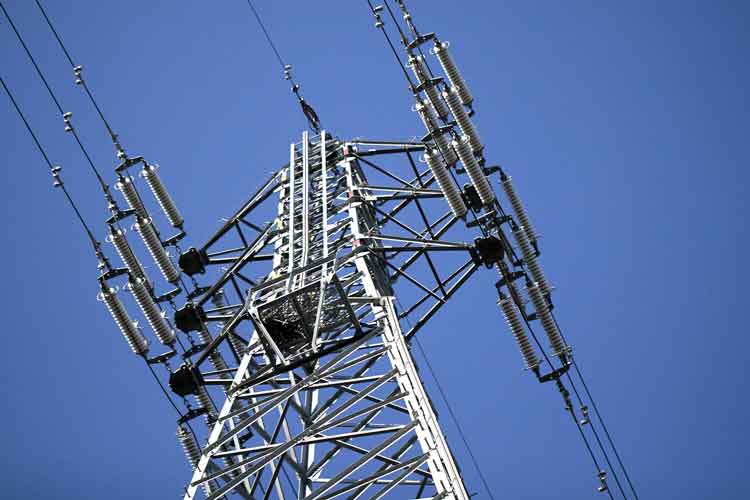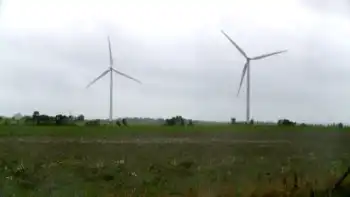Edison, gaining on repairs, has plan to reduce outages
SOUTHERN CALIFORNIA - About 8,600 households continued to endure power outages July 25 in the 12th day of a grueling heat wave that brought energy use to another all-time record in Southern California Edison's service territory.
However, Edison officials said they finally were beginning to make headway replacing transformers that failed because of heat, lightning and overwork.
Power was reported out in sections of Fontana, Hemet, Redlands, Rialto, San Bernardino, Chino, Chino Hills, Corona, Norco, Ontario, Lake Elsinore, Moreno Valley, Murrieta, Temecula and Perris, said Edison spokesman Tom Boyd.
Since the heat wave began, a total of 750,000 Edison customers, most of them residential, have lost their electricity for some period of time, from 30 seconds to more than 72 hours, said Ron Litzinger, Edison's senior vice president of transmission and distribution.
The Independent System Operator, manager of the state power grid, said because of slightly lower peak demand statewide and an increase in power imports from the Northwest, California on July 25 did not have to order businesses with specially discounted electric rates to shut down, as it did the previous day.
Still, power demand was great enough July 25 for the state to call a Stage 1 alert in the early afternoon, which denotes an urgent need for voluntary conservation efforts.
Edison said electricity use on its system peaked by 4 p.m. at 22,889 megawatts, beating the record of 22,816 set July 24. Southern California Edison has 4.7 million customers in Southern and Central California, including most of the Inland Empire.
Utility officials attributed the high power demand to the extraordinary heat coupled with energy use that exceeded their expectations, even though their expectations for total consumption have grown along with the Inland region.
Riverside and San Bernardino counties have added a quarter-million homes since 1990, and their 143,300 new central air conditioners add up to a lot of additional electricity use.
Of the 1.23 million housing units in the two-county area, 97 percent have refrigerators, 68.6 percent have dishwashers and 68 percent have central air conditioners that run on electricity, according to a U.S. Census Bureau housing survey.
Over the weekend, lightning and windstorms destroyed transformers and power poles, leaving many people without electricity. The extra use of air conditioners strained the electric grid and high temperatures day and night kept equipment such as transformers working even harder with no relief.
As of July 25, 1,000 distribution transformers had failed and 500 more failures were expected before the heat wave abates, Litzinger said.
With 400 repair crews working around the clock and night temperatures slightly cooling, Litzinger said the utility was putting homes back on line faster than they were being knocked off the power system. The outage count in about 24 hours had been shaved from about 15,000 to about 8,600 as of 7 p.m. July 25. Of that, about 1,400 were in the Inland area.
Edison officials said as part of a mutual aid agreement, Portland, Ore.-based PacifiCorp. had sent work crews to help restore power. Litzinger said the company called for assistance the evening of July 23 when it realized some of its customers could be cut off from electricity for several days.
He said Southern Californians have increased their electricity use in recent years, and the extent of that trend hit home for Edison in the past few days.
"The power usage per customer has increased driven by people adding air conditioning and electronics, but we had not seen the trend manifest itself over the last several cool summers," Litzinger said.
In the past year, the utility has revised the average number of homes 1 megawatt of electricity can serve in a year from 750 to 650, with the power stretching farther on the coast than in Inland Southern California.
Litzinger said in response to the trend, Edison plans to put fewer houses on each transformer to reduce the possibility of transformer failure in another heat wave.
He said the utility has embarked on a $7 billion program to expand and replace its distribution system over the next five years. He said that will include adding circuits so that each transformer will serve fewer homes. Edison previously added 30 new distribution circuits a year to handle load growth, but because of skyrocketing energy demand, he said, the plan now is to add 50 to 60 circuits annually.
Riverside Public Utilities said the municipal utility set a record July 21 and 24 for power demand of 586 megawatts, which exceeded the previous all-time peak demand of 550.6 megawatts set exactly one year earlier.
Banning's municipal utility recorded 44 megawatts of power usage, 4 megawatts short of the record set a year ago, said Fred Mason, the utility's power resource and revenue administrator.
Related News

Florida Power & Light Faces Controversy Over Hurricane Rate Surcharge
MIAMI - In the aftermath of recent hurricanes, Florida Power & Light (FPL) is under scrutiny as it implements a rate surcharge to help cover the costs of restoration and recovery efforts. The surcharges, attributed to Hurricanes Debby and Helene, have stirred significant debate among consumers and state regulators, highlighting the ongoing challenges of hurricane preparedness and response in the Sunshine State.
Hurricanes are a regular threat in Florida, and FPL, as the state's largest utility provider, plays a critical role in restoring power and services after such events. However, the financial implications of these natural disasters often leave residents…




